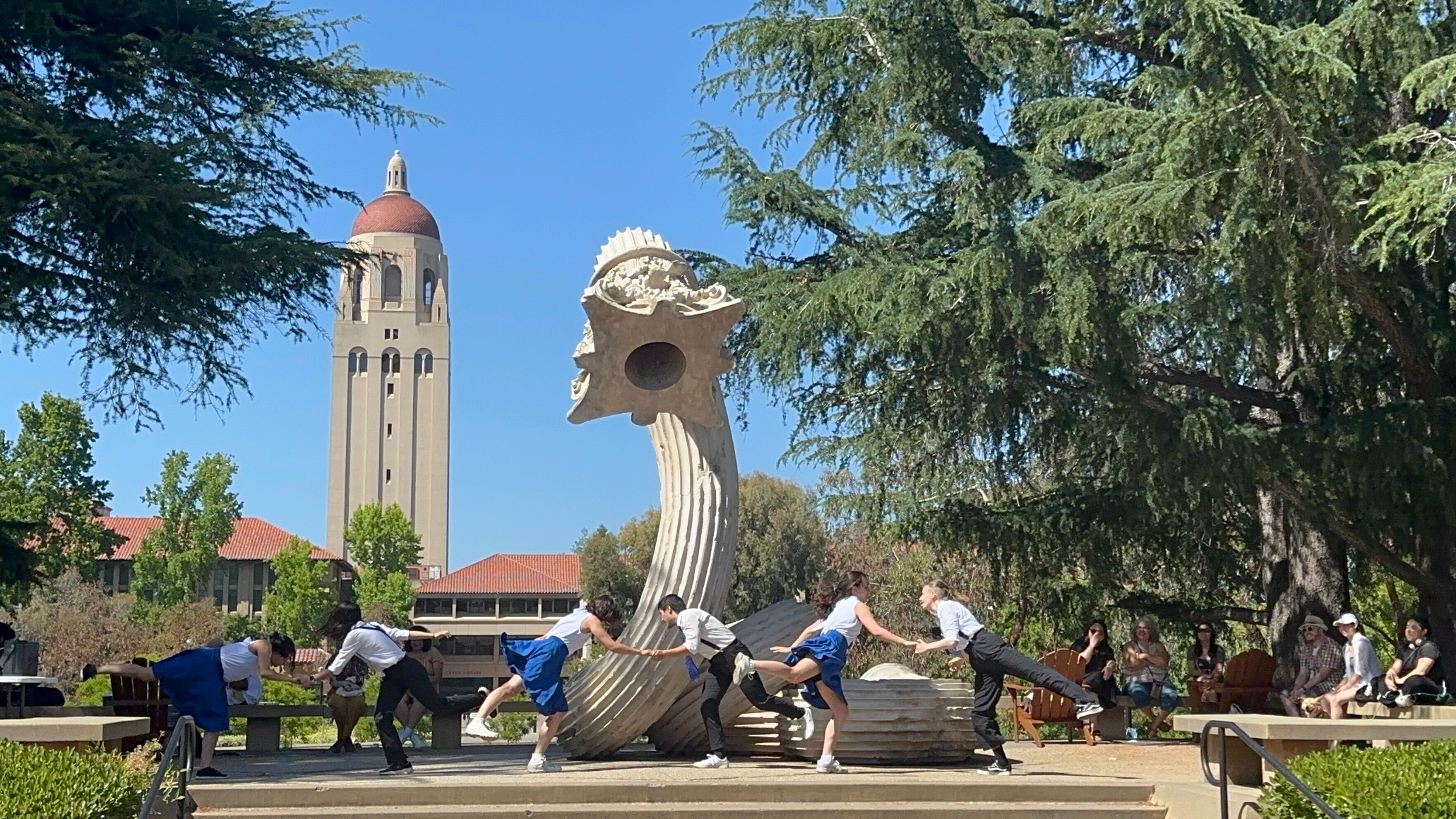On Thursday, the Stanford Public Art Committee hosted the event “Goodbye, ‘Hello’” to commemorate the de-installation of the looming, 15-foot tall sculpture by Xu Zhen at Meyer Green. Alia Farid’s sculpture “Amulets” will replace the twisted Corithinian column next fall as part of the Stanford Plinth Project.
Affectionately dubbed the “churro” by students, the “Hello” sculpture is the first work in the Stanford Plinth Project, a rotating public series of long-term, temporary commissions displayed at Meyer Green. The Plinth Project rotates works to keep up the timeliness and dynamism of public artwork on campus for the community to engage with.
Last Thursday’s event featured live performances by student groups, including the a cappella group Everyday People and the social dance club Swingtime. While event organizers originally planned to offer free churros in honor of the statue’s nickname, the churro machine experienced technical difficulties that prevented them from being served, although onlookers could still enjoy free lemonade.
Wesley Larlarb ’25, a member of Everyday People, believes their performance helped create a “lighthearted” vibe to celebrate the statue’s oddly endearing nature. The group sang harmonious and mellow songs, including “Fallin’” by Alicia Keys.
“We just wanted nothing that was too overly serious,” explained Larlarb, who likes the statue partly because it looks “kind of goofy.”
According to Zhen’s artist statement for the statue, “Hello” is intended to “[fuse] together the classical Greek column shape and the snake’s aggressive biological attitude to stimulate viewers’ perceptions and experiences of classic civilization.”
However, the statue was initially met with mixed reactions from students when it was installed in 2022. Henry Tian ’27 found “Hello” intimidating when he first came on campus, interpreting it as a giant worm rather than a column or a churro.
“I thought it was a bit spooky,” Tian said. “It’s very imposing with the big worm head looming over you.”
Yet Tian expressed sadness over the statue’s removal, saying he now believes it looks “iconic.” He expressed his hope that the Plinth’s next statue will be able to “walk in its footsteps [and] live up to the legacy” of “Hello.”
Zara Thomas ’26 sounded her approval for the Public Art Committee’s decision to rotate through temporary public artworks.
“I think it’s kind of sad when the art goes, but it’s cool to be able to experience a lot of different types of art,” she said.
Fahrid’s “Amulets” sculpture, which will replace “Hello,” aims to continue the original statue’s theme of blending contemporary and ancient art forms. The piece, which will consist of two large-scale amulets made of polyester resin and blue faience, seeks to highlight Mesopotamian history and comment on modern environmental degradation and mineral extraction in Iraq.
According to the Stanford Report, the artwork was chosen based on its “formal beauty” and the relevance of its environmental themes to the Bay Area.
Deborah Cullinan, vice president for the arts and co-chair of the Public Art Committee, wrote that commissioning outdoor public artwork enhances the cultural engagement of the Stanford community, allowing onlookers to ponder on the “time and place” of the sculpture.
“Selecting works that resonate with campus research, community interests and the zeitgeist of a moment are meaningful for the campus community that sees it daily and for the visitor,” Cullinan wrote.
Stanford collaborated with James Cohan gallery, which represents Xu, to display “Hello” at Meyer Green. The sculpture will be returned to the gallery once it is de-installed this summer.
